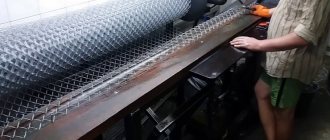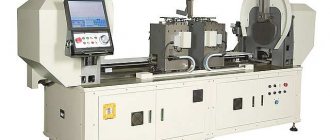Guides are an important part in the design of a milling machine. Many craftsmen can make CNC guides with their own hands; most practitioners have experience working at home.
When planning home furniture production, it is necessary to maintain precision in design. Therefore, many masters mastering it need high-quality equipment. A special woodworking mechanism will make work easier and allow you to create high-quality products in a short time.
To ensure that products are highly accurate but meet modern specifications, CNC models are used.
Computer numerical control
Numerical program control provides such an opportunity, but not every entrepreneur can buy it. It is for this reason that there is a need to manufacture a home-made unit, for the construction of which parts of our own production are used.
The main parts of milling machines designed for processing a particular material are guides. They are ball or roller bearings whose purpose is to move the carriage. Their goal is to speed up, simplify and add precision to production.
Do-it-yourself assembly of guides and carriages for a CNC machine
The mechanics of each machine, regardless of its purpose and type, contains components that are considered basic.
Therefore, it is unacceptable to ignore their parameters. It is generally accepted that guides are considered such an important component for metal-cutting or woodworking devices. They will determine error-free and cyclical work. Therefore, anyone who decides to create a machine must ensure that its design uses high-quality CNC guides, which have a positive effect on the functionality of the device. They don’t skimp on purchasing components.
The role of ball guides in furniture production
Despite the fact that the principle of operation of telescopic devices is used to create many products in various fields of scientific and practical human activity, they most often continue to be used in the production of cabinet furniture of various types.
Ball guides are needed to equip furniture with them, which then becomes much more functional, and in addition:
- allows drawers to slide out silently;
- increases the permissible load, which has a direct impact on the box, extending its service life.
Scheme for installing ball guides in a drawer and the box underneath it
So, as an example, we can cite wardrobes, inside of which multiple drawers are installed, saving free space and generally increasing the usability of this piece of furniture. Usually such drawers are filled with clothes and accessories, as they say, to capacity. And yet, thanks to ball guides, they work silently and accurately.
By installing ball-type guides into your piece of furniture, you will increase the service life of the furnishings equipped with them, as well as increase the convenience and efficiency of using the furniture.
Specific installation calculations will depend on the parameters of the box and fasteners selected for it
Main types of guides
In the process of designing and installing machines (factory-made and home-made), different types of guide devices are used. This is due to their purpose - milling, drilling or turning. They can be of two types.
Sliding guides
They are used in low-power equipment that does not require special precision and high productivity. Table-top drilling and turning units and woodworking machines are equipped with such parts.
The polished shaft, as a type of guide, belongs to the budget category. It is the most common.
IMPORTANT! It is made of high-alloy steel, induction hardened and subsequently ground. This treatment increases the operating time, and the shaft wears less.
The polished shaft has disadvantages:
Shaft and its types
It is worth giving a brief description of the other types.
- The spline shaft is characterized by the presence of a special track for the bushing balls. Characterized by greater rigidity and wear resistance, compared to a conventional shaft, it is suitable for mechanisms in which it is desirable to install guides at the ends. They are used extremely rarely in the design of machine tools due to their high cost.
- The shaft on a support in the form of cylindrical rails of a linear type does not allow sagging under load and its own weight. It is mounted on the frame, securely fixing it. Despite the disadvantages, expressed in the presence of large play in the bushings and their short service life, cylindrical rails have a large load capacity. Different from linear bearings, the carriage reacts differently to the degree of load. A small CNC machine that has a heavy spindle has the potential for reduced accuracy.
- The purpose of profile rail guides is greater accuracy. They are also attached to the frame. Thanks to special raceways, the loads on the carriage are distributed evenly over the surface, and the contact profile of the ball to the rail is an arc. Among the advantages are the presence of good load capacity and wear resistance, and backlash is minimized. The difficulties of producing such rails have a negative impact on pricing; they are expensive. This especially applies to guides supplied by well-known brands whose machines are numerically controlled.
- Roller rails have flat raceways, and in the support module, in place of the balls, rollers are installed that improve all the parameters of the guide. They are used in machines that mill ferrous metals, steel and stone.
- Dovetail is chosen for industrial metalworking equipment if increased fastening rigidity is required. In guides of this type, flat surfaces slide with a maximum contact area. They are made in the form of a monolith with a frame. Due to the complexity and labor-intensive manufacturing and repair process, these guides are therefore not accepted by the hobby machine tool industry.
Rolling guides
They are designed using rolling bearings.
Linear bearings have more play than the carriage of rail guides; they are less loaded. But it has a number of disadvantages:
The material for the production of bushings is bronze, brass, caprolon. If tolerances are maintained, bronze plain bearings are as good as rolling bearings. From time to time, if the plain bearing is worn out, it is adjusted to eliminate the gaps. Therefore, the linear bushing is preferred due to its availability and interchangeability.
Which designs to choose?
Not everyone can afford to purchase, say, a CNC machining center for the production of small-scale parts at home, a format-type machine or for turning. But a homemade CNC unit, made with your own hands, is real. The assembled device in capable hands will demonstrate examples of correct processing of parts.
When assembling the mechanics of programmable machines, homemade linear guides are usually used, since there is no need for devices with circular motion. Let us pay attention to some of the designs used in this case.
Galvanized or chrome-plated pipes
They come with different diameters and can be used as rods when installing low-power devices - surface grinders, drilling or lathes. The bronze bushing moves along a polished cylindrical rod. Sometimes a support is made without it. Pipes have low prices and are easy to process. Although there is a disadvantage: a short service life (the protective layer wears off after 15-20 penetrations, after which the steel wears out more intensively), there is no required level of strength under high loads.
Fraser
An effective router is one in which the guide mechanism is made from a used dot-matrix printer or Yantar typewriter. With this option it will last a long time. There is no need to look for very wide bearings; their internal diameter should be equal to the diameter of the bolts.
Furniture rods
The problem of mechanics for CNC machines can be solved properly with the help of furniture rods. Moreover, homemade products using them guarantee thorough processing on woodworking, belt sanding equipment, and even a low-power milling machine. Furniture components are cheap, although they have a short resource.
Polished shaft
Inexpensive and frequently used type of guide. The essence of the treatment is to inductively harden the top layer, which helps to increase the service life and reduce the intensity of the wear process. The shaft is then polished and the carriage moves with minimal friction.
Homemade
It is often practiced to install homemade guides using what is available. For example, you can use angle steel, bearings, nuts and bolts.
IMPORTANT! Do not take aluminum, in this case you need to be prepared to frequently replace the part. The tracks in it are eaten away by the ball bearings of the carriage.
It is better to give preference to a steel corner. If the mechanism is expected to be used intensively, it is better to harden and polish it to reduce friction on the bearings.
Stocks
When assembling a small home machine, sometimes they use car strut rods from a domestic car as guides. They are durable and made of high quality metal. This will significantly reduce the cost of components.
There is also this option: aluminum busbars from the switchgear of a transformer substation with pressed-in copper-graphite bushings from a MAZ starter. And the moving units are made from pneumatic valves, which are used to control pneumatic cylinders.
When making guides and carriages for CNC with your own hands (roller or ball), you must use the following expected criteria:
NOTE! Some craftsmen advise doing without bushings in machine mechanics. This option is possible, but it is fraught with deterioration of the manufactured products, and the service life of the installed rod device will be reduced.
Comments
Interesting idea. Fly in the ointment: Alas, as nylon deforms, backlashes will appear sooner or later. I was also puzzled by the idea of high-quality bearings: I made linear ones based on bronze-graphite bushings.
1 judging by the reviews, abs deforms faster 2 yeah, I encountered wedges. however, all disassembled ink jets have bronze bushings
there is not only the curvature of the shafts, but also their non-parallelism
I used this block design https://www.thingiverse.com/thing:2299544 for the bronze bushings. The design allows the sleeve to be aligned with the shaft. It is parametric, try it, maybe it will suit your bushings.
there is a carriage on X, it’s much easier than under the table.
I have a cross-shaped platform itself, on which the table bearings are attached, it is deformed, bending at the corners, respectively, at the moments of greatest effort in the bearing, it turns out, giving the table movement, but the table moves away at the same time











